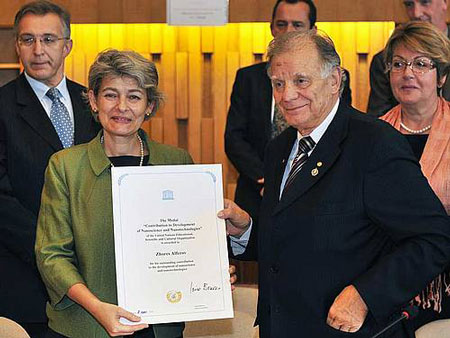 The first UNESCO Medals 'For contributions to the development of nanoscience and nanotechnologies' were awarded on November 2, at Paris headquarters to two laureates: Russian Academician Zhores Ivanovich Alferov, winner of the 2000 Nobel Prize in Physics; and Chunli Bai, Professor of Chemistry at the Laboratory of Molecular Nanostructure and Nanotechnology in Beijing and Executive Vice-President of the Chinese Academy of Sciences.
The first UNESCO Medals 'For contributions to the development of nanoscience and nanotechnologies' were awarded on November 2, at Paris headquarters to two laureates: Russian Academician Zhores Ivanovich Alferov, winner of the 2000 Nobel Prize in Physics; and Chunli Bai, Professor of Chemistry at the Laboratory of Molecular Nanostructure and Nanotechnology in Beijing and Executive Vice-President of the Chinese Academy of Sciences.
Nov 4th, 2010
Read more
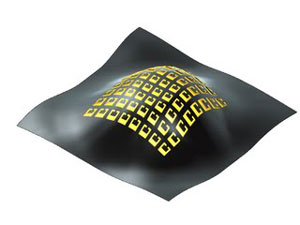 Flexible smart materials that can manipulate light to shield objects from view have been much-theorised but now researchers in Scotland have made a practical breakthrough that brings the possibility of an invisibility cardigan - or any other item of invisibility clothing - one step closer.
Flexible smart materials that can manipulate light to shield objects from view have been much-theorised but now researchers in Scotland have made a practical breakthrough that brings the possibility of an invisibility cardigan - or any other item of invisibility clothing - one step closer.
Nov 4th, 2010
Read more
A new report from the Project on Emerging Nanotechnologies (PEN) at the Woodrow Wilson International Center for Scholars explores a variety of voluntary options available for the oversight of nanotechnology products and processes.
Nov 4th, 2010
Read more
Researchers dispel the notion that membrane infrastructure is all water like - it can have bounce, too
Nov 3rd, 2010
Read more
Scientists at the U.S. Department of Energy's Los Alamos National Laboratory and Brookhaven National Laboratory have fabricated transparent thin films capable of absorbing light and generating electric charge over a relatively large area.
Nov 3rd, 2010
Read more
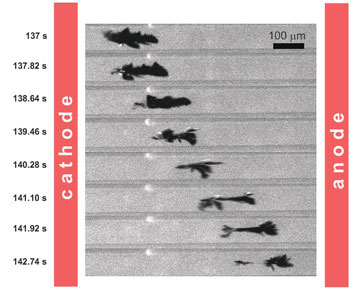 The process is based on the novel concept of bipolar electrochemistry: under the influence of an electric field, one end of a metallic object grows while the other end dissolves. Thanks to this permanent self-regeneration, objects can move at speeds of the order of a hundred micrometers per second.
The process is based on the novel concept of bipolar electrochemistry: under the influence of an electric field, one end of a metallic object grows while the other end dissolves. Thanks to this permanent self-regeneration, objects can move at speeds of the order of a hundred micrometers per second.
Nov 3rd, 2010
Read more
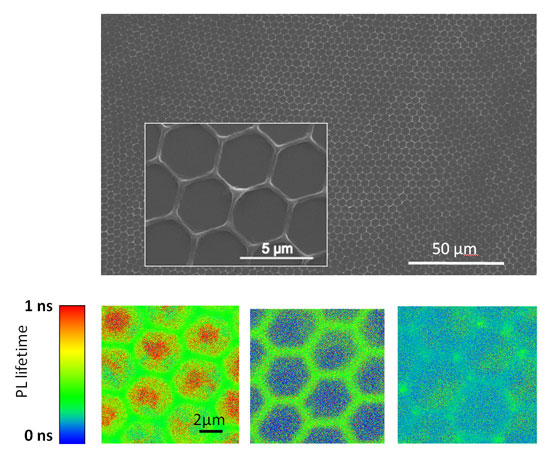 Combines elements for light harvesting and electric charge transport over large, transparent areas.
Combines elements for light harvesting and electric charge transport over large, transparent areas.
Nov 3rd, 2010
Read more
HZB researchers may have observed the fastest melting of all time.
Nov 3rd, 2010
Read more
Dr. Eui-Hyeok Yang, Associate Professor of Mechanical Engineering and Director of the Micro Device Laboratory (MDL) at Stevens Institute of Technology, The Innovation University (TM), will receive funding from the National Science Foundation (NSF) for the acquisition of a Nanoimprint Lithography System (NIL) for the purpose of nanoscience research and education based on low-dimensional materials at Stevens.
Nov 3rd, 2010
Read more
The German Federal Environment Agency (Umweltbundesamt) has released a study paper 'Study of nanoparticle emission of selected products during their life cycle'. The summary is available for download in English or the full version in German: 'Emission von Nanopartikeln aus ausgewaehlten Produkten in ihrem Lebenszyklus'.
Nov 3rd, 2010
Read more
Die Arbeitsergebnisse der Themengruppen der Nanokommission (2009-2011) sind nun auf der Webseite des Bundesministerium fuer Umwelt, Naturschutz und Reaktorsicherheit als Download bereitgestellt worden.
Nov 3rd, 2010
Read more
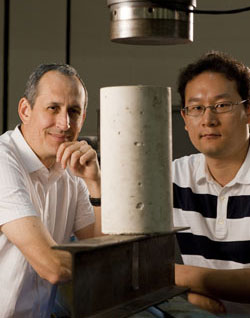 A new report is highlighting both the potential benefits of nanomaterials in improving construction materials and the need for guidelines to regulate their use and disposal.
A new report is highlighting both the potential benefits of nanomaterials in improving construction materials and the need for guidelines to regulate their use and disposal.
Nov 3rd, 2010
Read more
Nemucore Medical Innovations, as part of Northeastern University's Center of Cancer Nanotechnology Excellence (CCNE) consortium, will develop nanomedicine manufacturing processes under the recent $13.5 million grant from the National Cancer Institute.
Nov 3rd, 2010
Read more
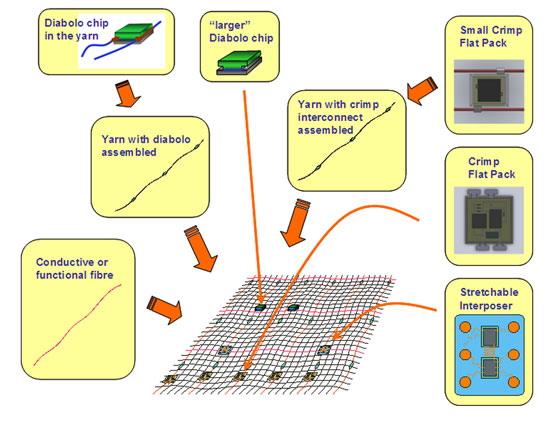 Imec and its project partners announce the launch of the European FP7 (Framework Program) project PASTA (Integrating Platform for Advanced Smart textile Applications) aiming at developing large-area smart textiles. Large-area manufacturability is an essential aspect in bridging the gap between lab prototyping and the industrial manufacturing of smart textiles for sports and leisure wear, technical textiles for safety and monitoring applications, and textiles for healthcare monitoring purposes.
Imec and its project partners announce the launch of the European FP7 (Framework Program) project PASTA (Integrating Platform for Advanced Smart textile Applications) aiming at developing large-area smart textiles. Large-area manufacturability is an essential aspect in bridging the gap between lab prototyping and the industrial manufacturing of smart textiles for sports and leisure wear, technical textiles for safety and monitoring applications, and textiles for healthcare monitoring purposes.
Nov 3rd, 2010
Read more
The Pittcon Program Committee is pleased to announce that the 2011 Technical Program is now available on the Pittcon website. The Technical Program held Sunday, March 13 - Thursday, March 16, will consist of symposia, organized contributed sessions, oral sessions, workshops, posters, and Conferee Networking Sessions covering a wide range of topics in areas of analytical chemistry, applied spectroscopy, life sciences, bioanalysis, food sciences, and related disciplines.
Nov 3rd, 2010
Read more
A new material with a split personality -- part superconductor, part metal -- has been observed by a Princeton University-led research team. The discovery may have implications for the development of next-generation electronics that could transform the way information is stored and processed.
Nov 3rd, 2010
Read more
 The first UNESCO Medals 'For contributions to the development of nanoscience and nanotechnologies' were awarded on November 2, at Paris headquarters to two laureates: Russian Academician Zhores Ivanovich Alferov, winner of the 2000 Nobel Prize in Physics; and Chunli Bai, Professor of Chemistry at the Laboratory of Molecular Nanostructure and Nanotechnology in Beijing and Executive Vice-President of the Chinese Academy of Sciences.
The first UNESCO Medals 'For contributions to the development of nanoscience and nanotechnologies' were awarded on November 2, at Paris headquarters to two laureates: Russian Academician Zhores Ivanovich Alferov, winner of the 2000 Nobel Prize in Physics; and Chunli Bai, Professor of Chemistry at the Laboratory of Molecular Nanostructure and Nanotechnology in Beijing and Executive Vice-President of the Chinese Academy of Sciences.





 Subscribe to our Nanotechnology News feed
Subscribe to our Nanotechnology News feed